Today’s Current Affairs: 26th December 2022 for UPSC IAS exams, State PSC exams, SSC CGL, State SSC, RRB, Railways, Banking Exam & IBPS, etc
Table of Contents
Facial Recognition : Benefits
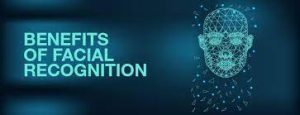
With the expansion of the Internet, there is an increase in the facial recognition of biometric information, including information generated for purposes for facial recognition technology.
- Facial recognition refers to the technology capable of identifying or verifying a subject through an image, video, or any audiovisual element of the face. Generally, this identification is used to access an application, system, or service and it works like a face scanner.
- It is a method of biometric identification that uses that body measures, in this case, face and head, to verify the identity of a person through its facial biometric pattern and data.
- The technology collects a set of unique biometric data of each person associated with their face and facial expression to identify, verify and/or authenticate a person.
- Facial recognition allows for fast and smooth remote identity verification.
- Facial recognition systems offer a unique, smooth, and fast user experience, avoiding the need for time-consuming office visits or video conferences and wait times.
- Like fingerprints or voice, each face is unique and has inimitable characteristics. Facial recognition systems, programs, or software compare through facial biometrics and facial recognition algorithms.
GI Tag For Joynagar Moa : Extended For 10 years
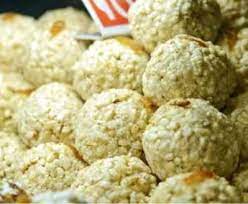
GI tag for Joynagar Moa has been extended for 10 years.
About Joynagar Moa:
- Said to date back to 1904, the moais made of aromatic khoi popped rice that is mixed with jaggery, sugar, cashew nuts and raisins.
- It has a short shelf life, lasting not more than five days without refrigeration.
- The high perishability has prevented it from being shipped abroad all these decades, and its export began, on a very small scale, only in 2020.
Acidification Of Great Lakes :By NOAA
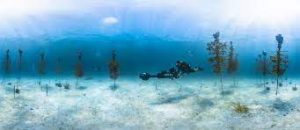
A study by the National Oceanic and Atmospheric Administration (NOAA)’s Ocean, Coastal, and Great Lakes Acidification Research Plan said, by 2100 even the Great Lakes of North America might approach acidity at the same rate as the oceans.
- The increase in atmospheric carbon dioxide has caused the world’s oceans to turn more acidic, but the new finding that the freshwater bodies are also turning acidic is a shock.
- Scientists are building a sensor network to measure the carbon dioxide and pH levels of the Lakes, starting with developing a system to detect the water chemistry trends of Lake Huron, one of the five Great Lakes
Acidification :
- It is a phenomenon resulting from the release of protons from certain substances into the ecosystem. These emissions increase the acidity (decrease in pH) of water and soils.
- Acidification of oceans or freshwater bodies takes place when excess carbon dioxide in the atmosphere gets rapidly absorbed into them.
- The absorption of carbon dioxide leads to a lowering of the pH, which makes the water bodies more acidic.
Consequences of acidification
- It will decrease native biodiversity,
- It will create physiological challenges for organisms,
- There are possibilities of permanently altering the structure of the ecosystem.
Great Lakes:
- The Great Lakes of North America, or simply the Great Lakes, are five interconnected bodies of water straddling the US-Canada border. They are the largest group of freshwater lakes in the world.
- The Great Lakes are Superior, Michigan, Huron, Erie, and Ontario.
- The US-Canada border passes through Lakes Superior, Huron, Erie, and Ontario.
- Lake Michigan lies entirely in the US.
- They drain into the Gulf of St Lawrence in the North Atlantic through the St Lawrence River.
Bijli Utsav : By REC
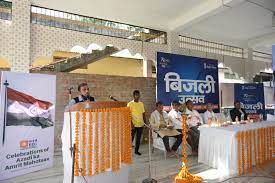
Bijli Utsav’ was organised by REC Ltd in Gujarat as a part of Azadi ka Amrit Mahotsav.
About Bijli Utsav:
- Speaker sessions by utility officials highlighting the consumer rights of electricity, benefits of electricity and the challenges faced during electrification in remote areas and how the quality of life improves with access to power.
- Engaged villagers and children in quiz competitions
- Nukkad Nataks were performed
- Distribution of LED bulbs as gifts to winners.
REC Ltd:
- It is an NBFC focusing on Power Sector Financing and Development across India.
- It is a Maharatna company under Ministry of Power.
- Established in 1969, it provides financial assistance to state electricity boards, state governments, central/state power utilities, independent power producers, rural electric cooperatives and private sector utilities.
- It is a Nodal Agency for Government of India’s flagship schemes viz. Pradhan Mantri Sahaj Bijli Har Ghar Yojana (SAUBHAGAYA), Deen Dayal Upadhaya Gram Jyoti Yojana (DDUGJY) and National Electricity Fund (NEF).
- REC’s funding illuminates every fourth bulb in India.
Patriot System:
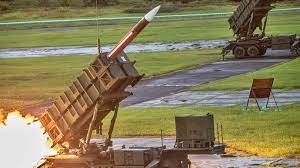
U.S.A recently announced that it would send its most advanced ground-based defence battery (Patriot system ) to Kyiv.
- Patriot system is one of the most sought-after defence systems and has been deployed in 18 countries, including the U.S.
- Initially developed as a system to intercept high-flying aircraft by Raytheon Technologies, the Patriot was modified in the 1980s to focus on other threats such as ballistic missiles.
- The programme’s roots can be traced back to the 1960s when the Pentagon was looking to replace the HAWK and Nike-Hercules air defence systems.
- Currently, Patriot batteries can defend against ballistic missiles, cruise missiles, drones, jets and “other threats”, but it doesn’t offer protection against low-flying small drones.
- A mobile Patriot system includes a control centre, a radar station to detect threats, missile launchers to take out those threats and other support vehicles.
- It can launch different types of interceptor missiles: The older PAC-1 and PAC-2 interceptors used a blast-fragmentation warhead, while the newer PAC-3 missile has a more advanced hit-to-kill technology.
- The Patriot system’s radar has a range of over 150 km and it can track over 50 potential targets at the same time.
Outbreak Of Bird Flu:
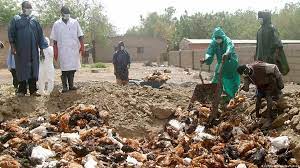
As many as 7,000 birds are being culled in Kerala’s Kottayam district following an outbreak of bird flu that has now spread to more parts of the district.
- Avian influenza or bird flu is a highly contagious viral disease caused by Influenza Type A viruses which generally affects poultry birds such as chickens and turkeys.
- There are many strains of the virus – some of them are mild and may merely cause a low egg production or other mild symptoms among chickens, while others are severe and lethal.
- Wild aquatic birds such as ducks and geese are the natural reservoir of Influenza A viruses and the central players in the ecology of these viruses.
Social Progress Index 2022:

The Social Progress Index (SPI) for States and Districts of India was released by the Economic Advisory Council to the Prime Minister (EAC-PM).
- The SPI was compiled by the Institute for Competitiveness and Social Progress Imperative.
- The report also dwells on India’s performance (ranked 110 out of 169 nations) based on the global SPI 2022 that is brought out by Social Progress Imperative since 2013.
EAC-PM:
- It is an independent body constituted to give advice on economic and related issues to the Prime Minister.
- EAC-PM is responsible for analysing and advising the Prime Minister on any issue of macroeconomic importance that the Prime Minister refers to.
Findings of the Index:
- Highest SPI Score: Puducherry
- Lowest SPI Score: Jharkhand and Bihar
- Basic Human Needs: Goa, Puducherry, Lakshadweep, and Chandigarh are the top four states with the best performance in water, sanitation and shelter.
- Foundations of Wellbeing: Mizoram, Himachal Pradesh, Ladakh, and Goa have emerged as the best-performing states for the Foundations of Wellbeing.
- For Environmental Quality, Mizoram, Nagaland, and Meghalaya are the top three states.
- Opportunity: Tamil Nadu has achieved the highest component score for Opportunity dimension.
- Top Best Performing Districts: Aizawl (Mizoram), Solan (Himachal Pradesh) and Shimla (Himachal Pradesh) have emerged as the top three best-performing districts.
Kisan Diwas:

As many as 13 farmers known for innovative farming were felicitated to mark Kisan Diwas or National Farmers Day on 23rd December, 2022.
- The Kisan Diwas is observed across the country to celebrate the birth anniversary of Chaudhary Charan Singh, the former Prime Minister of India.
Chaudhary Charan Singh:
- He was born in 1902 at Noorpur in Meerut district of Uttar Pradesh and was the Prime Minister of India from 28th July 1979 to 14th January 1980.
- Being a proponent of rural and agricultural development, he made continuous efforts for keeping agriculture at the centre of planning for India.
- He was given the nickname ‘Champion of India’s Peasants’ for his work towards upliftment of farmers and development of agriculture throughout the country.
- He took a leading part in formulation and finalisation of the Debt Redemption Bill 1939, in order to give relief to the peasantry from moneylenders.
- He was instrumental in bringing about the Land Holding Act, 1960 which was aimed at lowering the ceiling on land holdings to make it uniform throughout the Uttar Pradesh.
- He left Congress in 1967 and formed his independent party known as the Bharatiya Lok Dal.
- He served twice as Chief Minister of Uttar Pradesh. He became Prime Minister of India in 1979.
- He was the author of several books and pamphlets, including ‘Abolition of Zamindari’, ‘Co-operative Farming X-rayed’, ‘India’s Poverty and its Solution’, ‘Peasant Proprietorship or Land to the Workers’ and ‘Prevention of Division of Holdings Below a Certain Minimum’
Russia-China Joint Naval Drills:

Russia and China have begun a joint naval exercise in the East China Sea.
- It involves firing exercises and anti-submarine drills.
- The main goal of the drills is to strengthen naval cooperation between the Russian Federation and the People’s Republic of China and to maintain peace and stability in the Asia Pacific region.
- This joint exercise is directed at demonstrating the determination and capability of the two sides to jointly respond to maritime security threats and further deepen the China-Russia comprehensive new-era strategic partnership of coordination.
- Russia and China have also engaged in frequent military drills over the past year, including in May 2022 when the two countries flew nuclear-capable bombers.
- That was followed with a sweeping joint exercise in September 2022 that involved more than 2,000 Chinese troops, hundreds of military vehicles, combat aircraft and warships.




